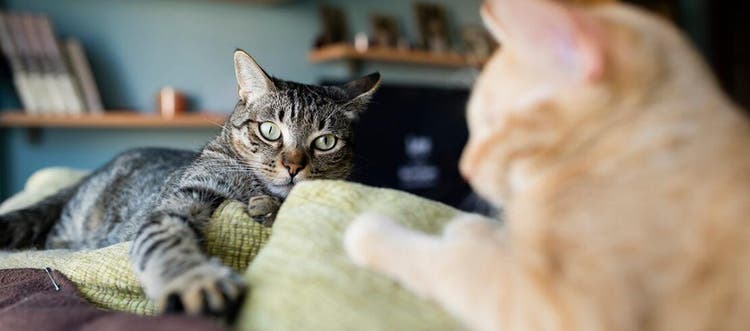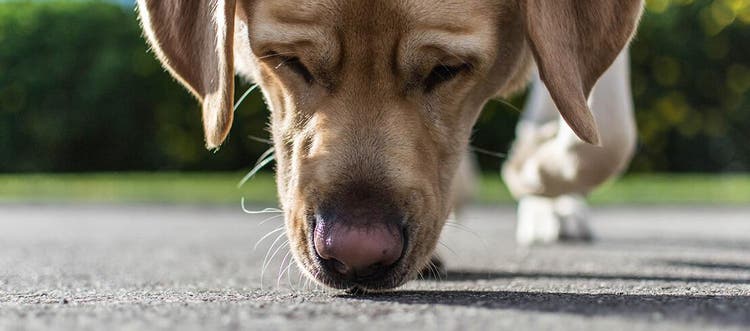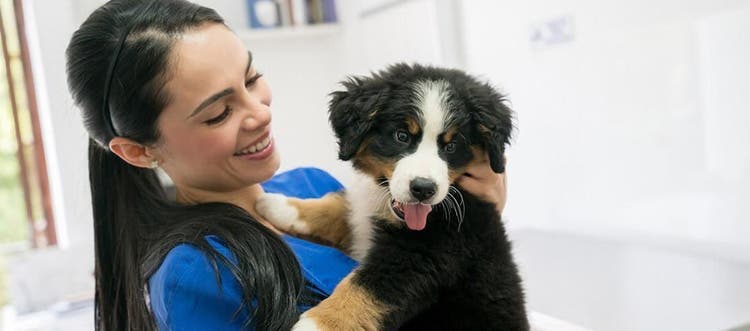A dog-training clicker can be a brilliant tool for training dogs using positive reinforcement.
Clicker training, which relies heavily on positive reinforcement, is an effective and fun approach for training your dog. You can use clicker training to teach your dog basic commands or complicated tricks. When your dog hears the clicker, they know they will receive a treat!
What is a dog-training clicker?
Dog-training clickers are simple, small plastic devices. The metal strip inside makes a distinct clicking sound when pressed. Clickers are inexpensive and can be purchased in pet stores, online or in person.
What is dog clicker training?
Dog clicker training is one of the simplest ways to teach your dog commands and tricks. It provides a consistent, audible response to your dog’s positive behaviour. With dog clicker training, you click the dog clicker after your dog successfully follows a given command or does a trick. After clicking the dog clicker, you then give your dog a treat. Over time, the dog learns to associate the dog clicker with rewards and following commands.
How do I use a dog-training clicker?
Dog-training clickers are very easy to use. This step-by-step guide will help you get started:
Introduce your dog to the clicker
- Make sure you have lots of small food treats on hand (ideally 20-30 bite-sized treats), as well as your clicker.Choose a quiet room with no distractions.
- Before you start the training, introduce the clicker to your dog. With a treat in one hand and the clicker in the other, click the clicker once and immediately give your dog the treat.
- Repeat this a few times so that your dog soon learns to associate the click with a treat. Once this association has been made, the click should start to get your dog’s attention.
Use the clicker to teach your dog a command
- Next, focus on the action you want your dog to perform – for example, sitting. As soon as your dog sits, click and give a treat.
- You can gently encourage your dog to sit – each time they do, immediately click and provide a treat. Your dog will soon make the connection between the desired action, the click and the treat.
Add vocal commands
- Start adding vocal commands – such as ‘sit’ – to direct your dog. Continue to click and reward each time. Repeat the process.
- After your dog has mastered this step, progress to only clicking and rewarding your dog when they perform the action on your vocal command. Don’t click or reward if your dog sits without the command.
- When your dog sits on command every time, you can start phasing out the clicker and the treats. Some trainers find that using a marker word like an enthusiastic “yes!” can help replace the function of the clicker as you transition your dog away from it.
Continue praise
- Once your dog is consistently following your vocal commands, stop giving them treats every time they complete the desired action. But still give an encouraging pat and plenty of praise. And, of course, you can still give a treat now and then when your dog is listening well.
Top tips for successful dog clicker training
- Timing is everything. It is important your dog understands the behaviour that’s being rewarded. Try to click during the correct behaviour if you can, and give the treat immediately afterwards.
- Reward every time. In the early stages of training, each click must mean a guaranteed treat. So even if you accidentally click the clicker, give your dog a treat anyway.
- Keep the treats small. Dog clicker training requires lots of treats. Keep them small so your dog doesn’t gain weight.
- End on a positive note. Training requires a bit of effort for both you and your dog (though it’s a lot of fun, too). Always end the training session on a positive note: a correct action, a click and a treat, and lots of praise.
- Phase out the clicker. Remember that a dog-training clicker is only for training new behaviours. Once your dog responds to the verbal command alone, it’s time to phase out the clicker (and the treats).









